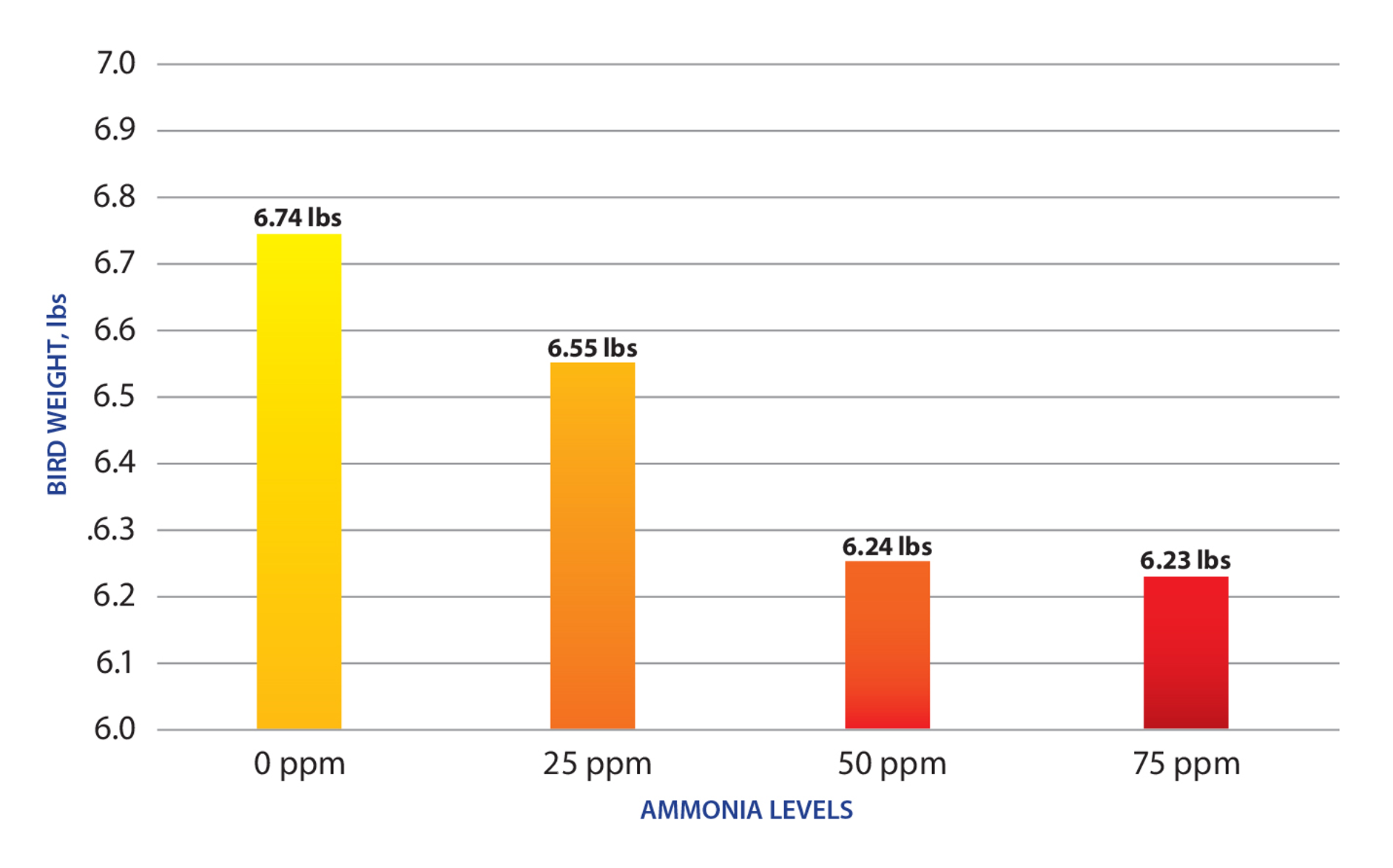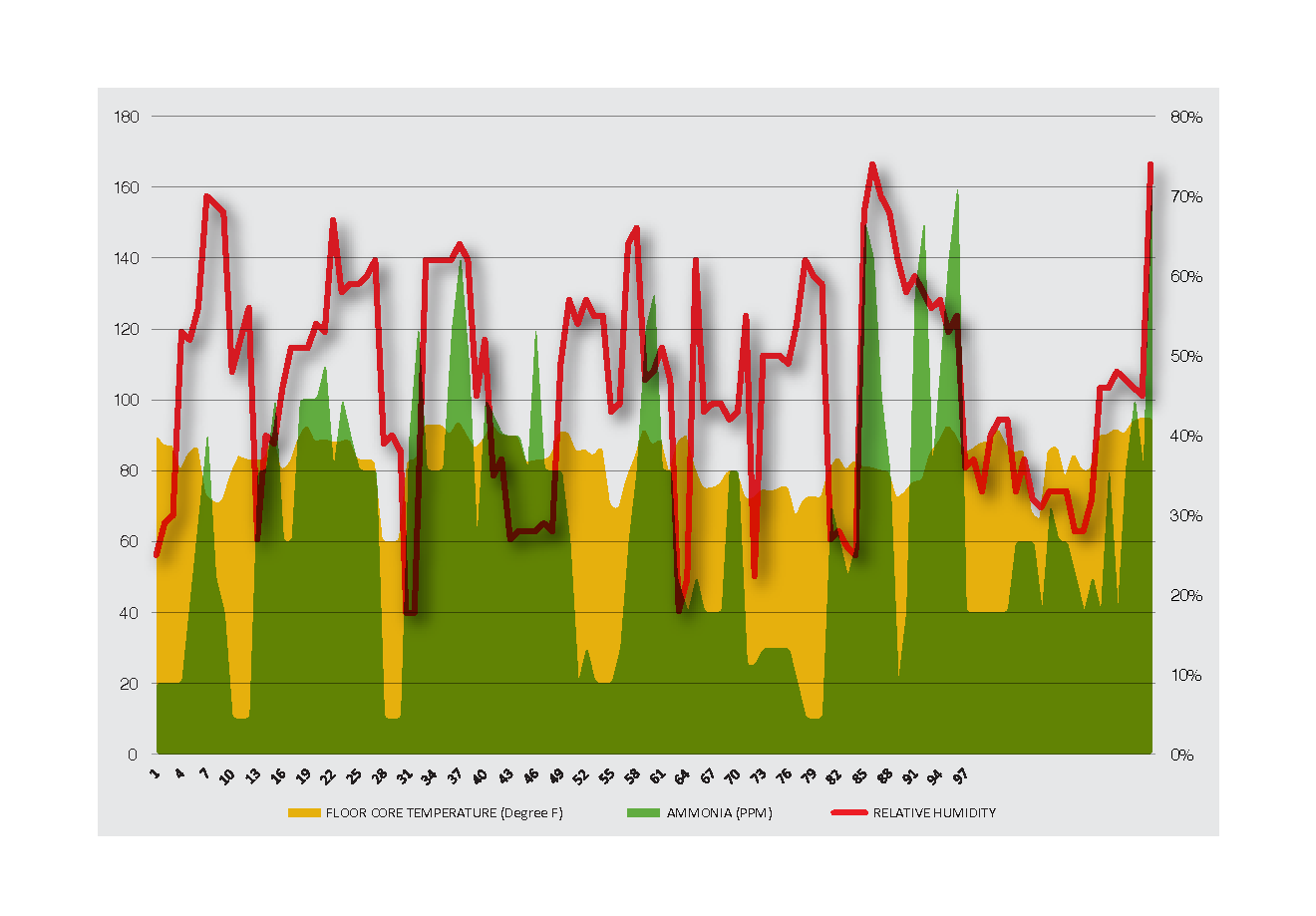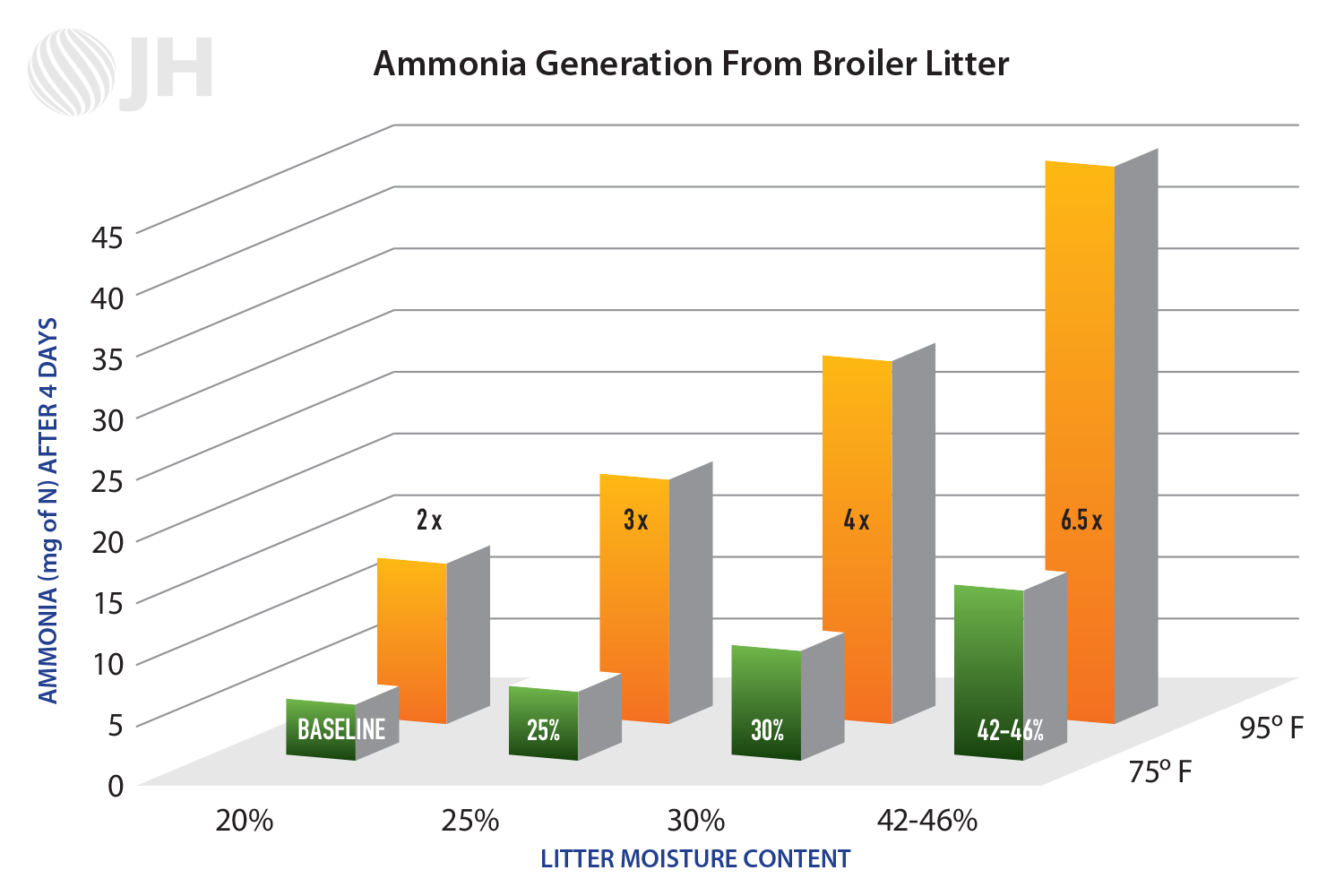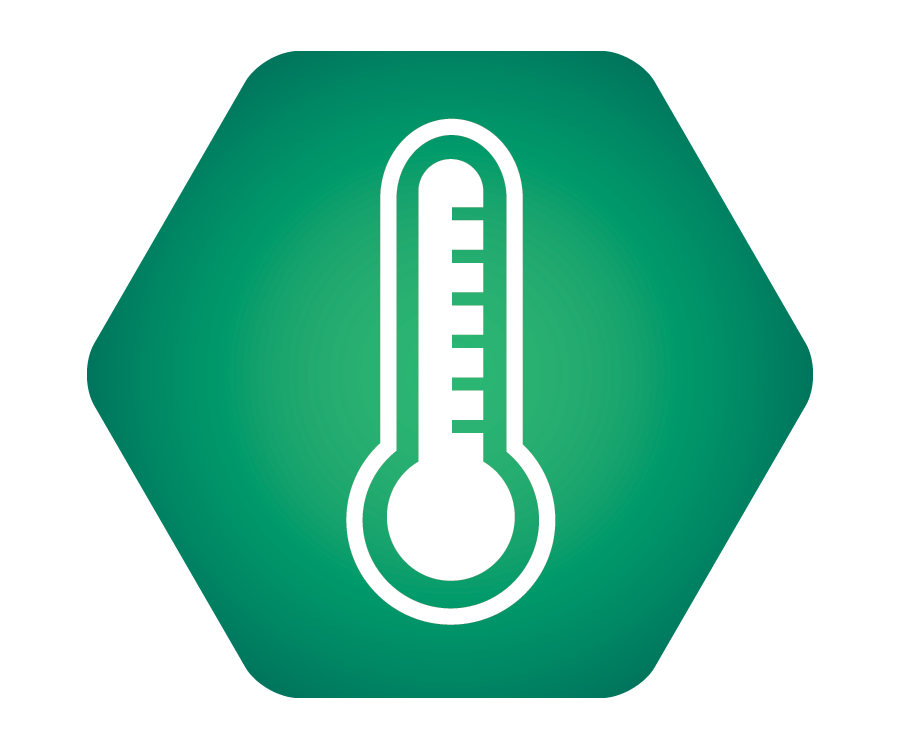 Ammonia is an unavoidable consequence of animal production. Given that 50 ppm of ammonia can decrease weights by 0.50 lbs and increase feed conversion by 8 points, failing to properly manage it brings considerable costs. In current market conditions, 1 point of feed conversion costs $12,000 on average (per week on 1M bird complex).
Ammonia is an unavoidable consequence of animal production. Given that 50 ppm of ammonia can decrease weights by 0.50 lbs and increase feed conversion by 8 points, failing to properly manage it brings considerable costs. In current market conditions, 1 point of feed conversion costs $12,000 on average (per week on 1M bird complex).
These negative impacts have been proven with decades of research. Miles et al showed that body weights declined by 2, 17 and 21% with ammonia levels of 25, 50 and 75 ppm respectively. Wang et al founded that three-week-old broilers raised with ammonia levels of 0 ppm compared to 52 ppm showed improvements in body weight (5.3%) and feed:gain (2.6%), as well as lower mortality.2 Ammonia exposure has also been linked to decreased meat quality.

Why does ammonia cause such significant losses?
Exposure to high ammonia concentrations negatively effect the development of a bird’s immune system. A bird’s ability to respond to respiratory disease challenges is directly related to air quality. Ammonia can breach respiratory defenses and allow viral and bacterial pathogens into the respiratory system.

When it comes to mitigating ammonia, the level of dedication varies. This is especially true in the summer due to the notion that hot weather ventilation programs sufficiently remove ammonia. An air quality survey of 206 houses conducted in July 2016 demonstrated many farms continue to struggle with high ammonia levels, even in summer months.
Need litter management expertise?
You've found it.
Ammonia and Moisture
Slight increases in moisture can translate to a significant boost in ammonia production. Given the hot, summer weather and the increased usage of evaporative cooling systems, houses not focused on managing moisture can experience increased ammonia volatility.
Ideally, litter moisture should be between 20 and 35 percent. Research by Miles et al showed that even slight increases in litter moisture can cause substantial increases in ammonia volatility—and that impact is magnified as temperatures rise.

Maximum ammonia volatilization occurs at approximately 42% litter moisture with temperatures of 75°F; at 95°F, maximum generation occurs near 46% litter moisture. At 95°F and 20% litter moisture content, ammonia volatility is nearly doubled compared to the same moisture content at 75°F.
Challenges of Increased Litter Moisture

Excessive moisture will cause litter to cake, which means the litter has been sealed off to create a continually damp, sticky and slippery surface. While this is most commonly seen around drinker lines, sidewalls and corners, severe moisture control problems can cause large areas of a house to cake over. Once litter reaches this state, the litter is saturated with water and it cannot escape. To prevent litter from caking, moisture must be removed through adequate ventilation and proper heating.

Wet litter does not retain heat well, so it can lower bird’s body temperature which can be detrimental to weight gain, feed conversion, paw condition and immune function. Also, since floor temperatures are more important to bird health than air temperatures, increased pre-heating times are necessary to not only prepare wet and dry litter but to maintain bird temperature, which increases fuel costs.

Wet litter also greatly increases pathogen load, and with it the chances of a disease outbreak, as well as incidence of breast blisters, footpad dermatitis, condemnations and downgrades. If caked litter is not removed and moisture is not managed, paw lesions can begin to form in the first week of a bird’s life as the liquid ammonia at the litter surface begins to erode the paw.
Focus on Litter Management to Control Ammonia
Excessive moisture, improper de-caking and poor litter handling will encourage ammonia production and release. To keep ammonia levels below 25 ppm, focus on creating and implementing litter management BMPs to ensure that birds have the ideal conditions to meet their genetic potential.
